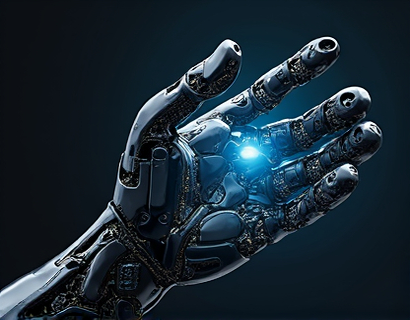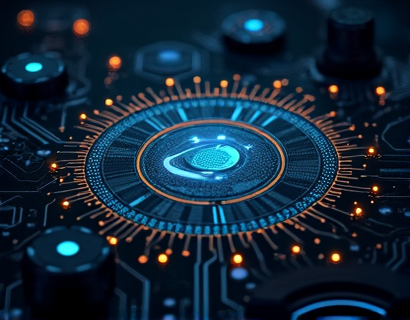AI-Driven Insights for the Spaghetti Industry: A Comprehensive Resource
The spaghetti industry, a cornerstone of culinary culture worldwide, has seen significant advancements with the integration of artificial intelligence (AI) technologies. This comprehensive resource aims to provide accurate and specialized insights into the spaghetti industry, tailored for families, educators, and enthusiasts. By leveraging an AI chat interface, users can engage with a wealth of information that ensures a secure and educational experience. This platform is particularly noteworthy for its child-friendly version, making it safe and accessible for young learners to explore the fascinating world of spaghetti production, history, and culinary applications.
Understanding the Spaghetti Industry Through AI
The spaghetti industry encompasses a broad spectrum of activities, from cultivation and processing to distribution and consumption. AI-driven insights offer a unique perspective on each stage of this journey. For instance, AI algorithms can analyze satellite imagery and climate data to predict crop yields and optimize farming practices. This not only enhances efficiency but also ensures sustainability, a critical aspect for the long-term viability of the industry.
Moreover, AI can streamline the production process by monitoring machinery performance, predicting maintenance needs, and improving quality control. In the realm of food safety, AI systems can detect contaminants and ensure compliance with health regulations, thereby safeguarding consumer health. These technological advancements not only benefit manufacturers but also contribute to the overall quality and safety of spaghetti products available in the market.
Historical Context and Evolution
The history of spaghetti dates back to ancient times, with early forms of pasta being consumed in the Mediterranean region. However, the modern version of spaghetti as we know it today began to take shape in Italy during the 14th century. The process of producing spaghetti involves mixing durum wheat semolina with water to form a dough, which is then extruded through dies to create long, thin strands. This traditional method has remained largely unchanged, but AI is now playing a pivotal role in enhancing and innovating this process.
AI can analyze historical data to identify trends and patterns in spaghetti production and consumption. For example, by examining sales data and consumer preferences, AI can forecast future demand, helping manufacturers to adjust production schedules and inventory levels accordingly. This data-driven approach not only reduces waste but also ensures that the market is well-supplied with the right types of spaghetti to meet consumer needs.
Sustainability and Environmental Impact
Sustainability is a growing concern in the food industry, and the spaghetti sector is no exception. AI technologies can significantly contribute to more sustainable practices. For instance, AI can optimize water usage in irrigation systems, reducing the amount of water required to grow durum wheat. Additionally, AI can help in managing waste by identifying ways to repurpose by-products from the spaghetti production process, such as using wheat bran in animal feed or as a biofuel source.
AI-driven analytics can also monitor the carbon footprint of spaghetti production, from farm to table. By identifying areas where emissions can be reduced, such as transportation and energy use in manufacturing facilities, AI helps the industry move towards more environmentally friendly practices. This not only benefits the environment but also appeals to the increasingly eco-conscious consumer base.
Enhancing Culinary Experiences
For culinary enthusiasts and home cooks, AI can elevate the spaghetti cooking experience. AI-powered cooking assistants can provide step-by-step guidance, adjust recipes based on ingredient availability, and even suggest pairing suggestions for complementary dishes. These tools can help beginners master classic recipes while offering advanced techniques for seasoned chefs.
Moreover, AI can assist in food pairing and flavor profiling, suggesting unique combinations that enhance the taste and presentation of spaghetti dishes. By analyzing flavor profiles and culinary trends, AI can inspire creativity in the kitchen, making the humble spaghetti a versatile and exciting ingredient to work with.
Educational Value for Young Learners
The child-friendly version of this AI chat interface is designed to make learning about the spaghetti industry engaging and accessible for young minds. Through interactive conversations, children can explore the journey of spaghetti from seed to plate. This educational approach not only fosters curiosity but also instills a sense of appreciation for the food they eat.
For example, children can learn about the different types of durum wheat used in spaghetti production, the role of farmers in growing these crops, and the processes involved in manufacturing spaghetti. AI can present this information in a fun and interactive manner, using visuals and simple language to cater to young learners. This educational resource can be a valuable tool for educators looking to incorporate real-world examples into their curriculum.
Ensuring Accuracy and Safety
The integrity of the information provided by the AI chat interface is paramount. To ensure accuracy, the platform is continuously updated with the latest research and data from reputable sources in the food industry. This includes collaborations with agricultural experts, food scientists, and culinary professionals. The AI algorithms are trained to cross-reference information and provide reliable insights, minimizing the risk of misinformation.
For families and educators, the child-friendly version of the chat interface is designed with safety in mind. All content is carefully vetted to ensure it is appropriate and safe for children. The platform adheres to strict privacy policies, ensuring that user data is protected and not used for any commercial purposes. Parents and educators can trust that their children are engaging with a secure and educational environment.
Community and Engagement
The AI chat interface also serves as a platform for building a community of spaghetti enthusiasts. Users can ask questions, share recipes, and exchange tips with others who share their passion for spaghetti. This community aspect fosters a sense of belonging and encourages the sharing of knowledge and experiences. Whether it's a family looking for new recipe ideas or a group of friends planning a spaghetti-themed dinner party, the platform provides a space for collaboration and creativity.
Educators can leverage this community feature to connect with other teachers and educators, sharing resources and best practices for teaching about the food industry. This network of professionals can collaborate on projects and initiatives that enhance the educational value of spaghetti-related topics.
Future Prospects and Innovations
As AI technology continues to evolve, the potential applications in the spaghetti industry are vast. Future innovations may include AI-driven personalized nutrition recommendations based on individual health data, further enhancing the culinary experience. Additionally, AI could play a role in developing new types of pasta products, combining traditional methods with modern technology to create innovative and delicious options.
The integration of augmented reality (AR) and virtual reality (VR) with AI could also transform the way we experience spaghetti. Imagine being able to virtually tour a spaghetti factory or participate in a virtual cooking class, all from the comfort of your home. These technologies, powered by AI, can make learning and enjoying spaghetti more immersive and interactive.
In conclusion, the combination of AI-driven insights and a user-friendly chat interface offers a comprehensive resource for families, educators, and enthusiasts interested in the spaghetti industry. By providing accurate, educational, and engaging content, this platform enhances the understanding and appreciation of spaghetti, from its rich history to its future innovations.











































